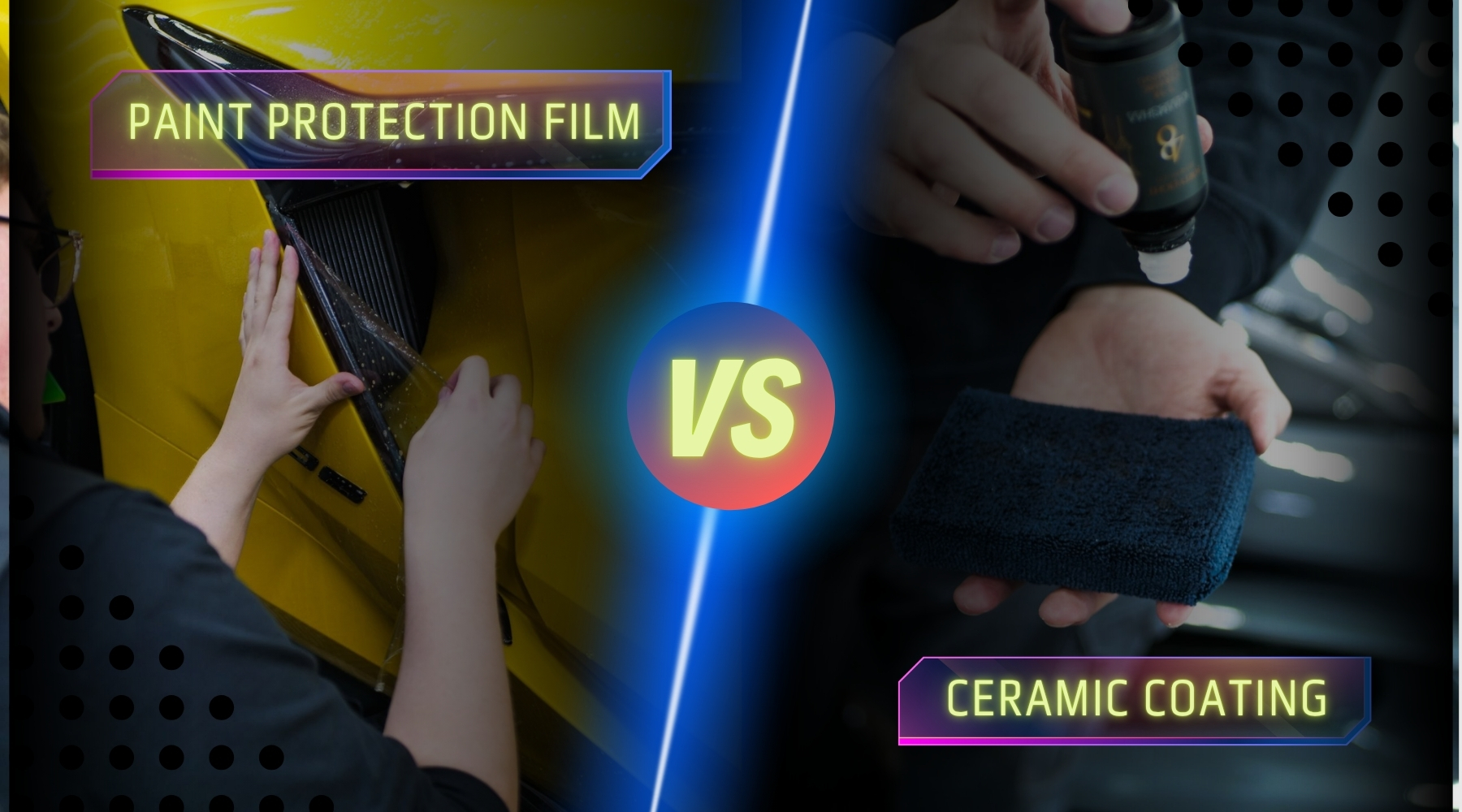For car owners in Surprise, Arizona, protecting your vehicle’s paint isn’t just a luxury; it’s essential. Between harsh UV rays, intense heat, desert dust, and flying gravel, your paint can quickly deteriorate without the right protection. That’s why many turn to two leading solutions: Paint Protection Film vs Ceramic Coating.
But which one is best for your needs? Should you choose one or both? Let’s break down how they work, their unique benefits, and how you can make the smartest choice for your car.
What Are Paint Protection Film and Ceramic Coating?
Paint Protection Film (PPF): The Shield Against Physical Damage
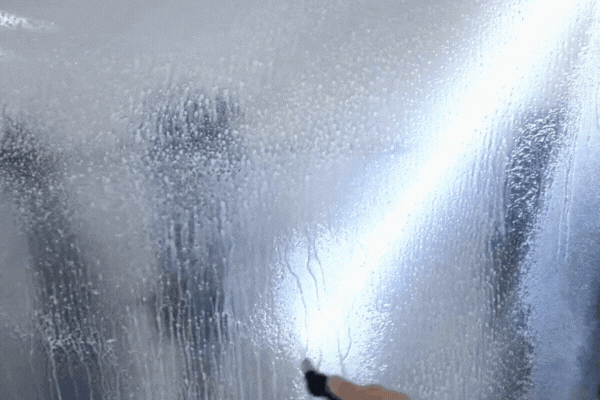
Also known as Clear Bra, Paint Protection Film is a transparent, thick urethane-based film applied to your car’s exterior. It’s designed to absorb impacts from rocks, road debris, and scratches, making it your best defense against physical damage.
Key Features:
- Self-healing technology: Minor scratches disappear with heat or sunlight
- Rock chip protection film: Protects high-impact zones like the hood and bumper
- UV protection for paint: Guards against fading and oxidation
- Typically lasts 5 to 10 years with proper maintenance
Want to learn more about the benefits of Clear Bra? Explore our PPF service page for full details.
Ceramic Coating: Enhance Shine and Simplify Maintenance
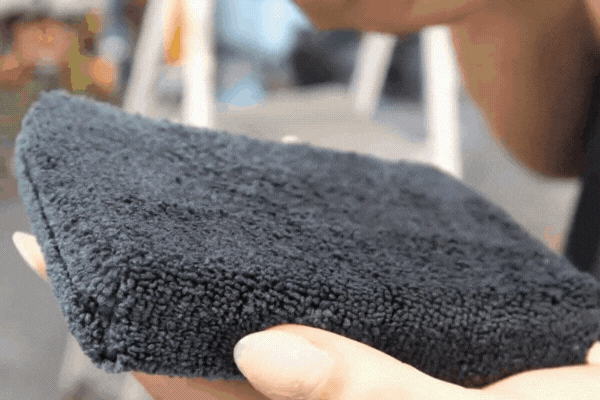
Ceramic coating is a liquid polymer (typically SiO₂ or nano-ceramic-based) that chemically bonds with your paint. Unlike wax, which sits on the surface, Ceramic coatings form a semi-permanent barrier that enhances gloss, offers UV protection, and repels water, dirt, and contaminants.
Benefits of Ceramic Coating:
- Hydrophobic surface: Water and grime bead off easily
- Gloss enhancement: Amplifies paint depth and shine
- Chemical resistance: Protection against bird droppings, sap, and bug guts
- Durability of 1 to 6 years, depending on the package
See the difference Ceramic coating can make. Check out 48 Detailing’s ceramic coating packages, including our 5+ year Gold Package.
Side-by-Side Comparison: PPF vs Ceramic Coating
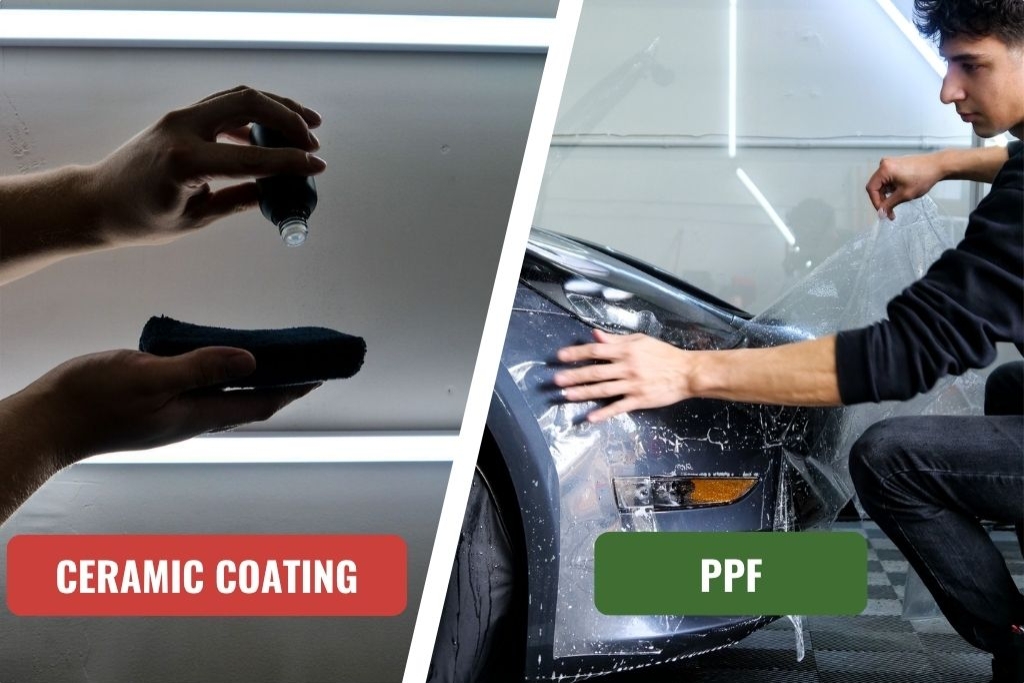
Feature | Paint Protection Film | Ceramic Coating |
|---|---|---|
Rock chip & scratch resistance | ★★★★★ | ★☆☆☆☆ |
Gloss & shine | ★★★☆☆ | ★★★★★ |
Hydrophobic coating (ease of cleaning) | ★★☆☆☆ | ★★★★★ |
UV & chemical protection | ★★★★☆ | ★★★★★ |
Durability | 5–10 years | 1–6 years |
Cost | Higher upfront | Lower upfront |
Maintenance | Low (check for film edges) | Moderate (top-up sprays recommended) |
Visibility | May show edges | Virtually invisible once applied |
Why Some Car Owners Use Both
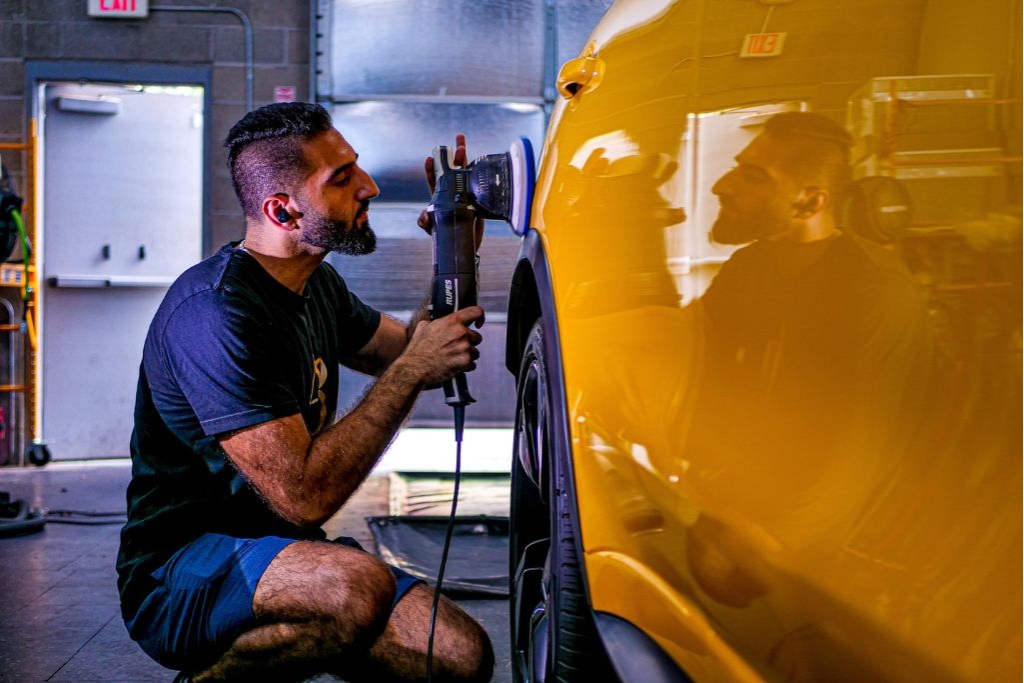
For many Arizona drivers, especially in areas like Surprise, where road debris and intense sun are everyday concerns, a hybrid protection approach delivers the most well-rounded solution.
- PPF is applied to high-impact areas such as the front bumper, hood, side mirrors, and fenders, zones most likely to be hit by rocks or road debris. This ensures the most vulnerable parts of the car are shielded against chips and scratches.
- Ceramic coating is then applied to the entire vehicle, including over the PPF. This adds a glossy finish, UV protection, and makes washing a breeze thanks to its hydrophobic properties.
By combining both, you get the physical durability of PPF where it counts and the gloss, chemical resistance, and easy maintenance of ceramic coating everywhere else. It’s a smart investment that helps preserve your vehicle’s appearance and longevity.
Discover why this combo is becoming the go-to solution in our blog on how useful paint protection is on a new car.
Factors That Influence Your Decision
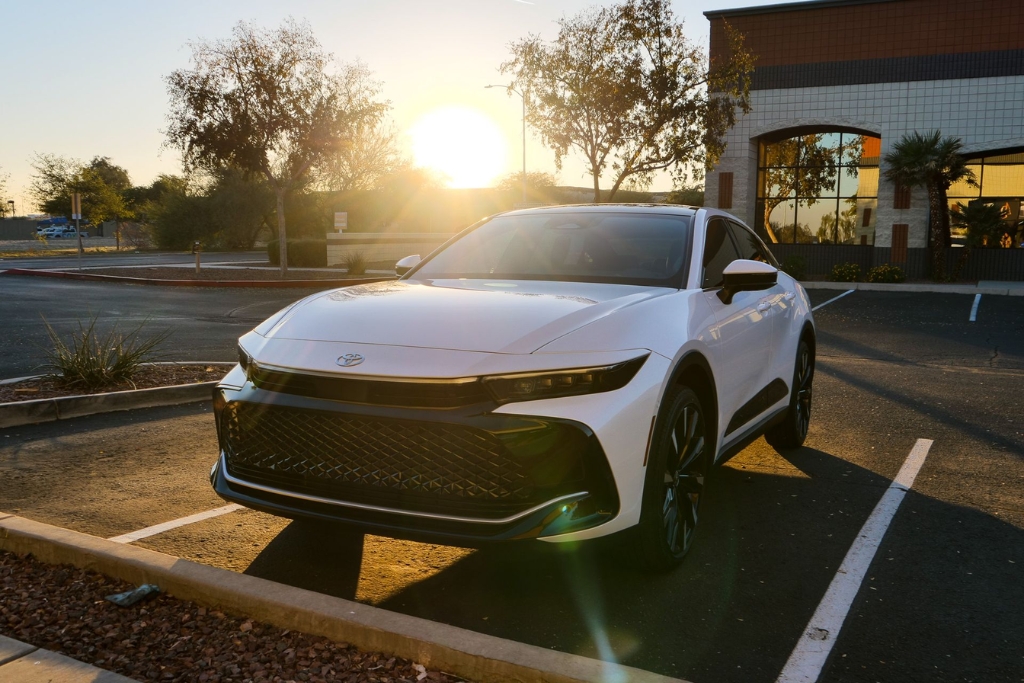
Driving Habits and Environment
Where and how you drive plays a big role in choosing between Paint Protection Film vs Ceramic Coating.
- Frequent highway or off-road driving? Choose PPF, especially for the front-end, to guard against flying gravel, road salt, and sand.
- City commuting or occasional weekend drives? A high-quality ceramic coating may be enough to preserve shine and protect from contaminants like bird droppings and tree sap.
- Living under the Arizona sun? Both options offer excellent UV protection for paint, helping to prevent fading and oxidation in our desert climate.
Budget Considerations
Your budget also matters, but think beyond the initial cost.
- PPF is a larger upfront investment, especially for full-body coverage, but it can last up to a decade with minimal upkeep.
- Ceramic coating is initially more affordable, but reapplication may be needed every few years, especially with cheaper or DIY options.
- Over time, the annual cost of protection often balances out, especially when considering long-term paint preservation and resale value.
Not sure which option is right for your vehicle and budget? Many drivers begin with a partial-front PPF installation and add ceramic coating for full-body coverage, maximizing value and protection.
Real-World Results from 48 Detailing Clients
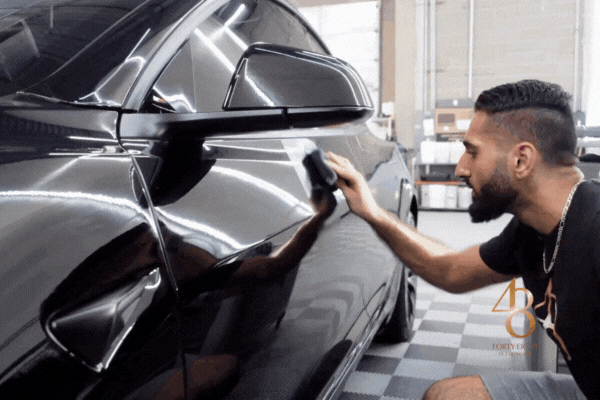
At 48 Detailing, we’ve helped countless Arizona drivers protect and preserve their vehicles, each with unique needs and environments.
One of our clients from Surprise, AZ, commutes daily along AZ-303. Constant exposure to highway debris led them to install PPF on the front bumper, hood, and mirrors. After six months, they reported zero rock chips and flawless paint. Impressed by the results, they later added our Silver Ceramic Coating Package to the rest of the vehicle. Now, not only is their car easier to clean, even after dust storms, but it maintains a consistent, deep gloss that resists water spots and UV damage.
Another customer chose a full-body ceramic coating, including wheels and glass. Their priorities were ease of maintenance and aesthetics. Post-application, they noticed improved nighttime visibility, fewer bird-dropping stains, and a mirror-like finish that consistently gets compliments.
These real-world results prove that professional installation and the right combination of protection options can make a noticeable difference.
Want protection like this? Request a quote today and let our certified experts recommend the perfect plan for your vehicle.
What's the Best Paint Protection for Your Car?
There’s no one-size-fits-all answer to the Paint Protection Film vs Ceramic Coating debate. Here’s our quick guide:
- Need serious impact protection? Choose PPF
- Want low-maintenance gloss and chemical resistance? Go with ceramic coating
- Want both? Combine them for full-spectrum protection.
And most importantly, work with certified professionals like the team at 48 Detailing. Our expert technicians deliver flawless installations backed by premium products and years of local experience.
Ready to protect your investment? Contact 48 Detailing or explore our Ceramic Coating packages & PPF today.
Answering Common Questions (FAQ)
Why does paint protection film resist rock chips better than ceramic coating?
PPF is a thicker, impact-absorbing layer, while ceramic is a hard, thin coating. PPF physically stops rocks and gravel; ceramic does not.
Why doesn't ceramic coating prevent physical damage?
Ceramic coatings are designed for chemical and UV resistance, not for impact resistance. They won’t stop stone chips or deep scratches.
Why is installer quality critical?
Poor prep or installation leads to early failure, visible defects, and reduced protection. At 48 Detailing, we follow precise, step-by-step processes for both PPF and ceramic.
Why do PPF and ceramic coatings degrade over time?
Environmental factors, harsh washing chemicals, and improper maintenance can wear them down. Routine care and top-up treatments extend their life.
Why is surface preparation so important?
A flawless install starts with perfectly clean, decontaminated, and polished paint. Skipping prep reduces bonding and effectiveness.
For more insights, check out our guide on how often to recoat ceramic coatings.

